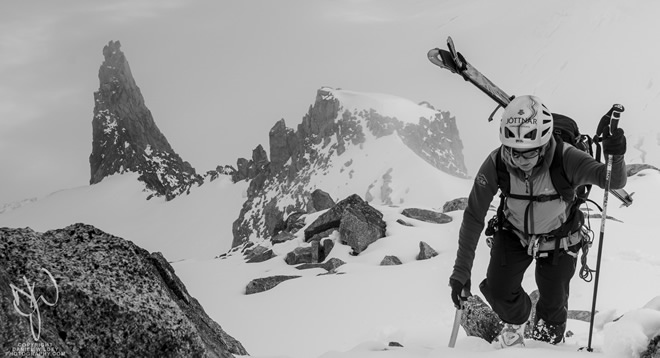Learning to Ski...
15th Jan 2016

Thinking of learning or improving your skiing? We thought we would share Alison's ideas on how to translate that hard won mountaineering experience to life on the planks… Note: Edited from an article for Mountain Pro Magazine
If you are a keen winter climber or mountaineer you might well have spent some time toiling to the bottom of an alpine couloir or mixed climb on foot or on snowshoes. This often torrid experience is nearly always enhanced by some flash looking continental beating you to the base of your route on skis. Getting around in the winter in Chamonix and other popular venues is often more logical on skis and increasing numbers of British climbers and mountaineers are looking flash too.
Inevitably as a Ski Instructor I often get asked by mountaineers about the best way to get into skiing. Here are my top tips to get into the sport, with mountaineers in mind. There are pros and cons and everyone has there own budget and time limitations. Hopefully this will give you an insight into which might be the best option for you, as well as where to spend and where to save you hard earned cash.
Firstly, as a climber and mountaineer YOU are probably already really well placed to learn to ski quickly for a variety of reasons. It’s more than likely that you will be used to being on steep snowy slopes, will be used to physical activity and are more than capable of picking yourself up, dusting the snow off and starting again. Of course a positive mentality is really important, and you are more than likely to say “well how hard can it be…?”
You will probably also be used to climbing movement, experimenting with balance exercises and be motivated to improve, any of these skills being transferable to skiing.
With all this in mind the next stage is to consider the equipment that you might need before hitting the slopes. Skiing is an expensive sport, and there are limits to everyone’s budget. Don’t fail at the first hurdle and make sure that you have the right kit for the job. Skiing is after all supposed to be fun. We don’t want to blame our tools; but in skiing we can, and remember it is more difficult to acquire the right skills without the right tools.
In most cases I would recommend concentrating on the technical equipment that connects you to the snow: boot, bindings and skis. As a climber and mountaineer you will have plenty of technical clothing that will be idea for skiing, it’s certainly not essential to buy really baggy trousers from day one. Hardshell’s are excellent for cutting out the wind, and allowing you to dust off the snow quickly before you mates have noticed you have ditched it.
Boots
We have probably all climbed in rock shoes that are too big at some point. That is the equivalent of what I see many people do when learning to ski. Progress is slow and enjoyment is limited as the ski simply won’t move accurately. If you only have money to buy one piece of kit then boots it should be.
I would recommend going to see a specialist boot fitter and finding out which brand of boot fits your feet best. Go into the shop without any preconceptions of which boots you might like. The best boot for you will be the one that fits your foot best (not your outfit). So there is no point picking a boot on its write up. If you have the right boots you should feel that every movement you make with your feet is transmitted directly to your skis.
Skis
Use modern skis. Look out for deals from last season but don’t buy a pair on eBay from 10 years ago. For off-piste skiing the ski should be a minimum of 80mm underfoot. Ski technology changes so quickly that if you are only skiing once a year it may make sense to hire. Then you can get the latest model each time you go skiing and you will not have to pay for ski carriage if you are flying. Skis such as the K2 Wayback have become very popular with ski mountaineers and are a great all round ski at a reasonable price.
Bindings
Which bindings you go for will depend on what you want to do.
|
What do you want to do? |
What weight? |
Examples |
|
Mainly uphill, weeklong ski tours, expedition skiing. |
Lightweight (approx 600g – 1.2kg per pair) |
Dynafit, Plum |
|
Mostly downhill, off-piste skiing, day tours. |
Heavyweight (approx 2 – 3kg per pair) |
Marker, Salomon |
|
I’m not sure. I’m just getting in to skiing/touring. |
Mid weight (approx 1.2kg – 2kg) |
Fritschi |
Dynafit bindings can take a bit of getting used to, and in most cases are worth considering when you are skiing confidently. The Marker and Salomon bindings are the closest thing to an alpine binding, and are easier to use initially and have a much better release mechanism than other models.
What about learning…? Everybody is different and learns in a different style, no one solution is the answer and it’s more than likely that a combination will work for you.
DRY SKI SLOPE
Learning at a dry slope gives a good introduction to the sport that is close to home and cheaper than going to the snow. They are scattered all over the UK so there will be one near you. You can find a list of them here http://www.skiclub.co.uk/skiclub/infoandadvice/uksnowsports/ukslopesmap.aspx Expect to pay between £5 and £15 per hour. It’s a good way to find out if you like it. Avoid using your own skis on a dry ski slope as it’s not great for the bases. There is a risk of injury when skiing on a dry ski slope, as there is with skiing anywhere, but pay particular attention to your thumbs! Depending on the slope the runs are quite short compared to what you’ll experience on snow. Just view it as training much like going to one boulder for the day, as opposed to doing a big mountain route.
INDOOR SNOW DOMES
There are now 6 indoor snow centres in the UK. These are more like the real thing than a dry slope but they are more expensive. Expect to pay £15 - £30 per hour. Most centres will state that you have to have a lesson if you haven’t skied before. They can be busy and you might have to book a slot. This is more like “real” skiing because you are skiing on real snow. You’ll not get the powder days that you do in the Alps but it is a good way to work out if enjoy the sport.
GROUP LESSONS
This is the cheapest way of getting instruction and provides a sociable environment to learn in. Some people enjoy the company of others when learning a new skill; some people find this adds to the pressure. You’ll know if this is the best way for you to learn or not. If you’re looking for a cheap way to start skiing but think you’ll progress quickly then one group lesson may be enough to get you going. Make sure you get advice from your instructor about what it’s best to do next.
PRIVATE LESSONS
Private lessons aren’t cheap but there is a reason for this. With a smaller or 1:1 ratio your contact time is increased and generally people make progress much quicker in private lessons than they do in a group. For private lessons I’d recommend having this in your first language. It gives you the option to ask questions and have things explained in another way if you don’t understand.
PRIVATE GROUP LESSONS
This is a good compromise between group and private lessons and you’ll find most ski schools and instructors will offer this. Create your own group to reduce the cost of hiring an instructor but it will mean you know who is in your group. You can ask people of a similar level and fitness to join your group and people that you know you’ll feel comfortable learning with. This normally results in quicker progress then in a group lesson but still maintaining the sociable aspect.
SELF COACHED
As a Ski Instructor I simply wouldn’t recommend self coaching initially. One of the advantages of having a lesson is not only the coaching but the instructor will take you to an appropriate slope or area of the mountain. You don’t want to be firing off down a 40 degree couloir with no idea how to stop. With a few lessons under your belt you can ask your instructor which slopes to go on and spend time consolidating good technique.
Another thing to think about is location. I learnt to ski in Scotland which was convenient as I lived within a short drive of a ski area. With cheap flights to the Alps it no longer provides a cheaper option, but it is one for many. When conditions are good the skiing is fantastic, just go with an open mind. As a climber and mountaineer you can always switch skis for boots and crampons depending on what’s best at the time.
For most people there view of skiing involves plenty of snow, sun and beautiful alpine views, and that means skiing abroad. It can however be a costly investment if you have no idea if you are likely enjoy the sport or not. If you decide to learn abroad spend some time finding the right resort, plenty of slopes at the right level, a good ski school, other activities if you need them.
If you decide to have lessons make sure you book them well in advance so that you can get the instructor and time slot that you want. Remember each of these ways of getting into skiing need not be used in isolation; you might have a private lesson to get started, spend some time practicing on your own and return to have a group lesson specific to the aspects of skiing that you want to learn. Whichever way you choose make sure it’s safe and best suited to you. Skiing is fun and we should learn it in a way that ensures that it stays that way, and maybe there is the bonus of being the first to the bottom of that dream couloir.
Alison Culshaw holds the BASI International Ski Teacher Diploma (Level 4) and has been teaching skiing in Chamonix since 2004 (www.offpiste.org.uk). The majority of her clients are ski mountaineers that want to improve their off piste skiing. Her course “Ski Performance for Mountaineers” has become increasingly popular with climbers, ski tourer’s and anyone with a love for the mountains. She works as a trainer on BASI Mountain Safety courses and offers CPD to the British Mountain Guides.

